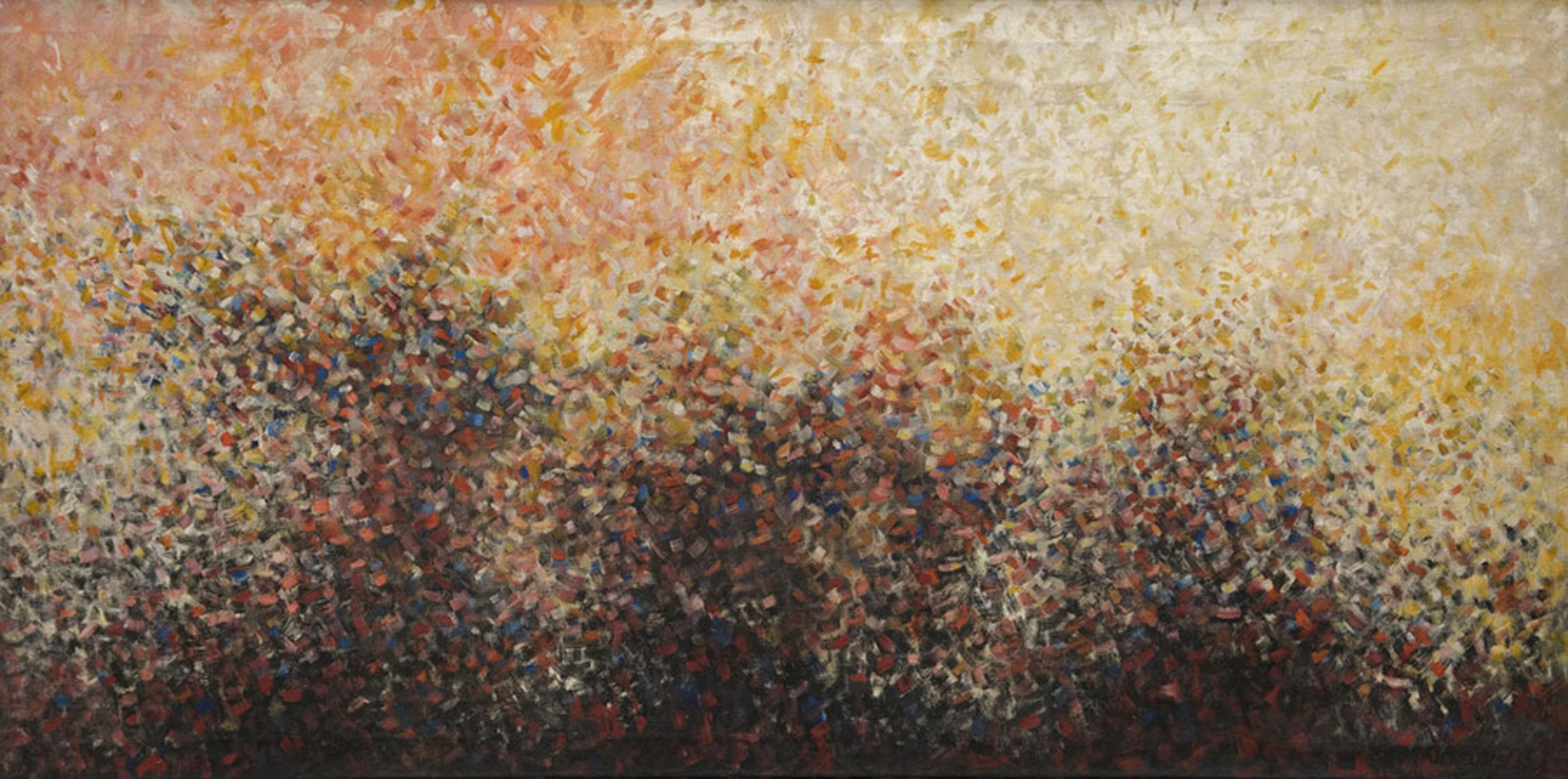Outcome
Norman Wilfred Lewis was born in Harlem, New York to Bermudan parents. He was interested in art from his childhood and, inspired by Alain Locke and his New Negro Movement, he was excited about African art. From 1933 to 1935, he met the sculptor Augusta Savage who was one of the most important African-American art educator and enrolled in her Savage School of Arts and Crafts. And this is Norman's early education.
Lewis ceased painting Social Realist works in the early 1940s because he found the style was not effective to counter racism. Then in the mid-1940s, Lewis began to experiment with pure abstraction, and became active in the New York and Abstract Expressionism and hosted his first solo exhibition in 1949. One of his great contribution to the art world is, in 1963, Lewis was a founding member of SPIRAL, a group of black artists committed to assist the ongoing Civil Rights Movement through art. In the later part of his life, Lewis mainly focused on painting the natural world.
The work I chose is "Torch". It was painted in 1960 by Norman Lewis as a wedding gift. The theme- or the story behind this painting- is that it "shows a scene familiar in Harlem: people gathered around a Sunday stump, with a speaker preaching on the city streets. The atmosphere appears to light up with the rhetoric of the fire-and-brimstone sermon that bellows through the crowds." The reason I chose this work is that, when I googled Lewis's paintings, the "Torch" is the one that lights me up- I was captured by its color and the warm feeling that it passes out. It was this kind of special feeling I felt in this painting that helped me make the decision to recreate this work in a modern media way. The texture is oil painting and the way of painting is a lot of short strokes gathered together with random directions- and this way of painting perfectly simulated the movement of flames. Further more, according to history background I quoted above, this painting also conveys happy and contains a sense of nostalgia. Perhaps it was the sense of nostalgia that eventually helped me decide to recreate this work.
https://drive.google.com/open?id=0ByTIIb3QOSVLWFJZXzZkcXI1RGM
This is the link to my project's mp3 file.
I chose to use audio to recreate the "Torch". According to the background, this painting represents the scene back to the Harlem Renaissance where people gather around a bunch a burning woods, while someone set up a few musical instruments and probably speakers and make music. I then searched on Youtube and found the "Harlem Renaissance Musics". From 11 songs, I chose 3 of them, cut them into pieces and mixed them together. There are three parts: the base part, which represent the black color in the painting; the flute part, which represent the light color flame on the upper right corner and dancing in the air; the singing part, which represent the happy people gathered around the fire and was having a great time. The music start with simple base pizzcato to give out the sense of cold weather and dark environment. Then the trumpet comes in, showing that people are gathering and the party is about to begin. Then the flute comes in, indicating the fire has been lighted up and people started to dance. Finally people started singing and continued their movements in the cold wind and none of them is bothered by the dark nor the weather. After a while, people ended singing and dancing and put out the fire and went home while the wind remains.
Through this project, I experienced the process of feeling a painting, the process of closely study a work of art and, since I never had the chance to do this, this is the first time I truly get in touch with paintings and it is a fantastic experience. If I was going to do it differently, I would use Reason or Logic Pro to create audio "strokes" by myself to recreate the sense conveyed in the painting and mix them together.
I think I captured the theme correctly because the painting was constructing a night scene during Harlem Renaissance. But I may not capture the style of the work so accurately because I only simulate the short strokes by using base pizzcato.
The process of transform the painting to music is kind of, well, hard to tell the feeling. Since painting and music are perceived through different ways, it's hard to ensure that the feeling captured by ears is the same as the feeling captured by eyes. So what I did was remembering the feeling and visualizing it in my mind in my own version, and then find sections of music that resemble my visualization. There are gains and loses in this transformation. Painting is giving out direct visualization and feelings, and more importantly, it's giving through eyes. Music, however, is conveying through ears which is a relatively indirect way. Through music, I need to guide my audience into the scene I'm creating to reach the same effect the painting is creating. But what I gain is a kind of 3D environment created by music, for painting is a 2D experience while music is enveloping the audience and totally put them into the time and place.
You can upload files of up to 20MB using this form.
